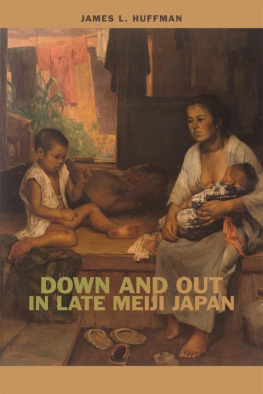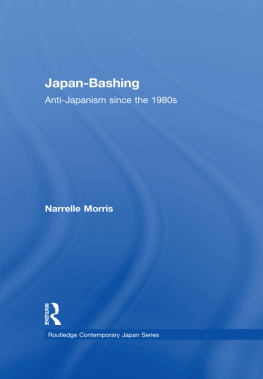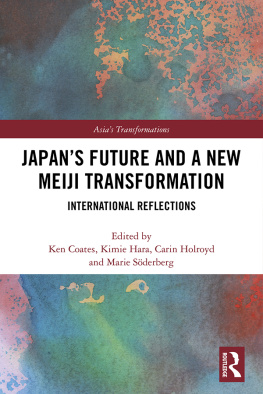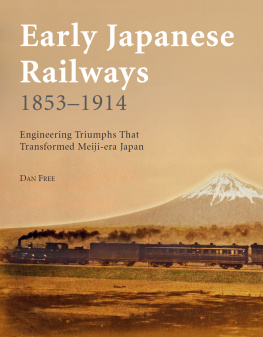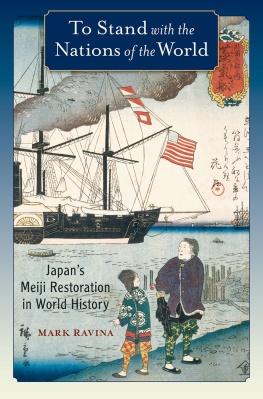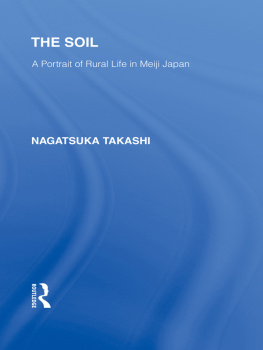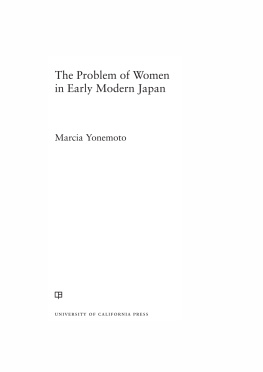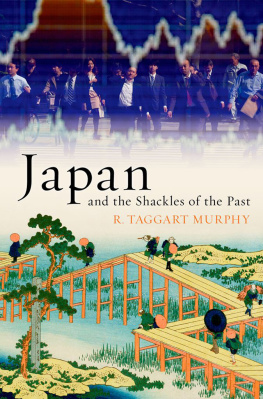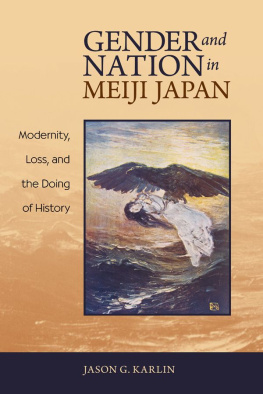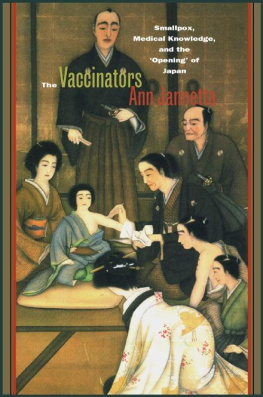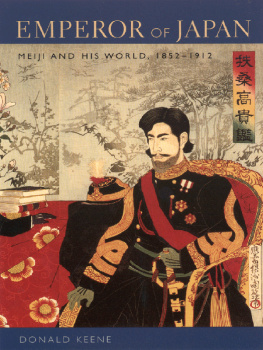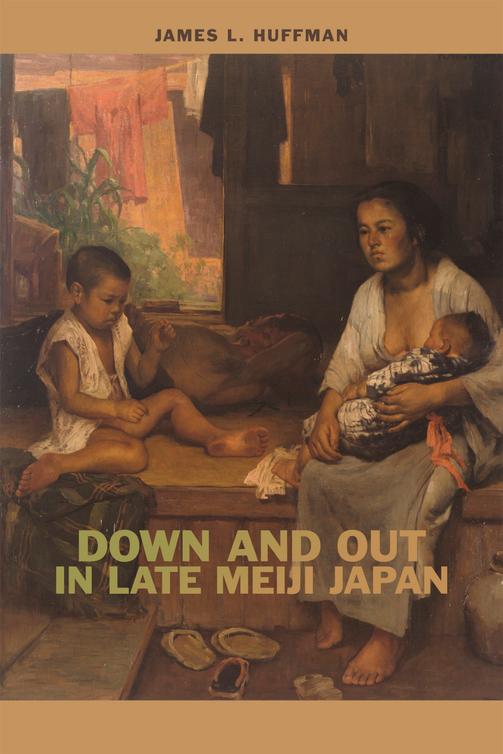2018 University of Hawaii Press
All rights reserved
Printed in the United States of America
23 22 21 20 19 18 6 5 4 3 2 1
Library of Congress Cataloging-in-Publication Data
Names: Huffman, James L., author.
Title: Down and out in late Meiji Japan / James L. Huffman.
Description: Honolulu: University of Hawaii Press, [2018] | Includes bibliographical references and index.
Identifiers: LCCN 2017055855 | ISBN 9780824874841 (cloth: alk. paper), Print 9780824872915, Amazon Kindle 9780824874865, EPUB 9780824874858
Subjects: LCSH: Urban poorJapanHistory. | Urban poorJapanSocial conditions. | JapanHistoryMeiji period, 1868-1912.
Classification: LCC HV4147.A5 H84 2018 | DDC 305.5/692095209034dc23
LC record available at https://lccn.loc.gov/2017055855
University of Hawaii Press books are printed on acidfree paper and meet the guidelines for permanence and durability of the Council on Library Resources.
Writing intimidates me. It confronts me with a hundred inadequacies as I try to do justice to materials and a story that are bigger than I am. Never is that more true than when I sit down to write acknowledgments, partly because I know that I will inadvertently omit people who should be thanked and partly because it is impossible to articulate how deeply dependent my work has been on great numbers of people, many of them friends, some of them relatives, and quite a few strangers who have helped me even though they did not know me. They have given me access to materials, suggested paths to follow, and, above all, provoked ideas and made helpful critiques. It goes without saying that these people bear no responsibility for the errors and failings of this work, but they deserve immense credit for keeping me going and making this study one of the richest experiences of my life. Thanks!
Let me begin with groups and organizations. Two groups have given me intellectual homes since my retirement from teaching: the Midwest Japan Seminar, headed by Elizabeth Dorn Lublin, and Northwestern Universitys East Asia Research Seminar, which Laura Hein leads. In both of these, the intellectual energy of friends who share their research and discuss ideas has been as important as the specific suggestions about my work. I also am indebted to institutions that have supported my research financially: the Northeast Asia Council of the Association for Asian Studies (supported by the Japan-U.S. Friendship Commission), Wittenberg Universitys Faculty Research Fund Board, and the Japan-U.S. Educational Commission, which administers the Fulbright grant program in Japan. JUSEC director David Satterwhite was unusually helpful at an early stage of this project, with astute observations that helped me narrow and frame my study. And the University of Tokyos Jh Gakkan granted me office space and library privileges under the directorship of Yoshimi Shunya, while the Waseda University Library repeatedly provided a research home.
Across the many years that I have been doing this work, I have been helped by endless people who have done special thingsusually with nothing to gain for themselvesto make the late Meiji hinmin come alive for me. I think of Nashilongo Shivute, who took me to the Namibian township of Mondesa, where I found the statement that begins this books sixth chapter; of James Mc-Mahon, who helped me gain access to Northwestern Universitys library and shared his enthusiasm for Japan; of Nishiyama Takanobu, the Shint priest who guided my interviews in Totsukawa; of Willa and George Tanabe, who showed me what life could be for descendants of sugar plantation workers; of Pat Crosby, who gave me wise direction in deciding what approach the book should take; of documentary filmmaker Brent Huffman, who provoked several of the ideas in this book; of Paul Snowden, who made it possible for me to work at the x Waseda Library; of two wonderful mentors, Roger Hackett at the University of Michigan and Kato Mikio of the International House of Japan; and of the brilliant economic historian Nakagawa Kyoshi, who shared his knowledge and enthusiasm so generously in Kyoto, then took me to an exceptional meal near the Imperial Palace. There also was Hoshino Kaoru, my student and aide, who did translations and gave me such encouragement. Others who helped with special needs of this sort included Djeld Duits, who made it possible to secure several of the works photos, Dave Barry at Wittenberg, Yamamoto Nobuto at Kei University, and Sagawa Osamu at Zenshen in Tokyo.
Among the most important contributions to this book were the perspectives inspired by people with whom I discussed the world of the late Meiji poor across the past few years. Kenneth Cukier gave me fresh ways of looking at things; Patricia Sipple provided insight into Japans contemporary poverty; Susan Burns shared her expertise on Hansens Disease; Got Kenichi helped me understand emigrant Japanese; Kobayashi Smei and Changhyun Lee shared their office at the University of Tokyo and helped me see things with new eyes; and my student Suzuko Kantar gave me insights Id never have had into Tokyos shitamachi areas, while another student-turned-colleague, Dennis Frost, introduced me to pertinent materials in the Ueno area and kept me alive mentally with his constant ideas. Others whose thoughts have helped to shape this studyand meinclude Timothy Cheek, Warren and Clara Copeland, Mitani Hiroshi, Terumi Imai, Linda Lewis, Jennifer Oldstone-Moore, Kaneko Yukie, Murai Norihito, Nakashima Reiko, Tammy Proctor, Shikata Norio, Stephen Smith, David Spengler, Eugene Swanger, Thomas Taylor, Donna Techau, Tomonari Noboru, Timothy Weston, and Samuel Yamashita. And there are, of course, those others whose names I will regret not mentioning just after this manuscript goes to press.
Then there are the colleagues who opened specific doors for my research, often places I could not have entered on my own. Iwata Mizuho and Ito Miyuki provided exceptional guidance in the Tokyo Fulbright office; Lucas Clarkson arranged my unforgettable time in Totsukawa Village; Kita Etsuko spent three invigorating days with me in the northern Kyushu area around Haki; and both principal no Yasushi and teacher Mukaihira Shinji brought special energy to my Totsukawa interviews. Though I have said it before, I must say again that many of my greatest heroes are librarians, people whose ingenuity and helpfulness amaze me. Hayashi Rie at Tokyos International House was repeatedly helpful in locating materials, as were Koide Izumi at the Shibusawa Memorial Foundation and Joan Hori at the University of HawaiiManoa. So too were Fujii Kaori and Shiraishi Megumi at the University of Tokyos Meiji Shimbun Zasshi Bunk. Others who helped me find materials included Keiko Yokota-Carter at the University of Michigan East Asia Library; Aoki Mutsumi (Kokubungaku Kenky Shirykan); Tokiko Bazell and Dore Minatodani (University of HawaiiManoa); Leah Pualahaole Caldeira, Tia Reber, and Matthew Yim (Bishop Museum); Higuchi Keiko (International House); Hirano Takako (Kyoto Buraku Mondai Kenky Sent); Kusumoto Wakako (Shibusawa xi Foundation); Gerald Marsella and Midori Oka (Peabody Essex Museum); Nait Seiz and Nishiura Naoko (Kokuritsu Hansenby Shirykan); Nakata Reiko (Buraku Kaih Jinken Kenkyjo); Suzanne Smailes and Regina Entorf (Wittenberg University); and Tanimukai Hajime (Totsukawa Rekishi Minzoku Shirykan).

